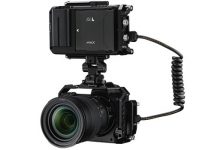Getting the perfect shot often can be quite a tricky and overwhelming process. Tools such as Glidecam or 3-axis brushless motor stabilisers can significantly improve your workflow, yet they are not perfect. Achieving the smoothest and steadiest shot with every take is still a serious challenge even for seasoned professionals.
This is where software solutions like the Warp Stabiliser may come in handy and do the dirty work. Unfortunately, these tools also need further tweaking and optimisation before yielding the desired results.
Here is a really powerful workflow showing you how to improve the performance of the Warp Stabiliser in Adobe After Effects. The DSLR camera operator Cal Thomson reveals this advanced technique he recently discovered to reach the optimal stabilisation of his shots.
First and foremost, you need to get your in-camera footage as smooth and stable as possible. If you’re still not pleased with the results, open your clip in Premiere Pro CC or directly in Adobe After Effects. Navigate to the Effects Panel, search for the Warp Stabilizer and drag and drop it onto the footage. The analyse processing will immediately start in the background. In the Warp Stabilizer Panel, you can see the progress of the operation and the numbers of the examined frames.
For instance, if the shot is wide landscape and the wobbling is mainly in the background the Warp Stabiliser will be able to fix the problems and remove the undesired artefacts by default. However, if there is a moving object in the foreground as in the given example above then the applied warp stabilisation may introduce even more undesired wobbling in the footage.
If that’s the case, you need to send your clip in Adobe After Effects to be able to access and further manipulate the tracking data applied by the Warp Stabiliser. To send footage from Premiere Pro directly to After Effects right-click on the selected clip in the Timeline and navigate to Replace with After Effects Composition.
In After Effects, click on the Advanced Settings in the Warp Stabiliser Panel, scroll down to Show Track Points and tick the box in order to view the tracking points of your shot. Increase the percentage to scale them up and then mark and remove the ones that are placed on the foreground object.
This is actually the tedious and the most time-consuming part of the process as you need to remove every undesired tracking point manually by scrubbing back and forward throughout the clip.
After you finish the process, you need to untick Show Track Points. Thus, you’ll be able to review the shot after the applied changes you’ve just made take place. If the composition is linked, the changes should update automatically in the Premiere Pro CC. If you’re doing the processing separately in After Effects, then you need to go to Composition, add the media to the Render Queue and then export the footage.
As we can see this extremely powerful and efficient technique works a treat, plus it can be applied in various shooting situations whether you are using your camera hand-held or mounted on a slider, monopod, tripod or gimbal.
[source: Cal Thomson YouTube Channel]
Disclaimer: As an Amazon Associate partner and participant in B&H and Adorama Affiliate programmes, we earn a small comission from each purchase made through the affiliate links listed above at no additional cost to you.
Claim your copy of DAVINCI RESOLVE - SIMPLIFIED COURSE with 50% off! Get Instant Access!





Excellent. Thx for sharing
Very nice tutorial, thanks!